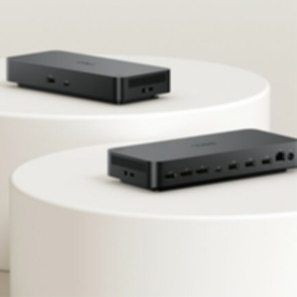
Hewlett Packard Labs quantum supercomputing framework selected for DARPA Quantum Benchmarking Initiative
April 12, 2025
Your Guide to Data Governance in an AI-Driven World
April 13, 2025What events help an MDR service detect attacks?
MDR
What information does an MDR service need to protect a company from complex targeted attacks?
Our specialists not only guide clients on optimal data collection but also stay vigilant about the changing threat landscape to continually enhance the process. Our latest MDR service report provides detailed insights into incidents within client infrastructures and the tactics employed by attackers. The report features a dedicated section that highlights the most frequently activated detection rules in 2024, along with the necessary requirements for their effective operation.
Dumping registry hives
Among the suspicious operations frequently detected in high-severity incidents, the most common by far is the extraction of security-critical data from the system registry (dumping of sensitive registry hives). This activity was observed in 27% of high-severity incidents.
To detect such extraction, the MDR provider must have telemetry from an EDR system installed on all computers and servers in the protected organization. If there’s an endpoint protection system (EPP) that can detect suspicious (not necessarily malicious) activity, this can also serve as a source of the necessary data. An event that most definitely should be logged is registry access.
Malicious code in memory
Many attacks occur in such a way that malicious files are never stored on the hard drive. However, an endpoint protection system can detect malicious code in the memory of a system process or another memory segment. This occurred in 17% of high-severity incidents, and such events from the EPP must be instantly visible to the MDR service.
Suspicious services
The creation and execution of Windows services containing suspicious arbitrary code is a strong indicator of an unfolding cyberattack. This was also detected in nearly 17% of high-severity incidents. To detect this activity, telemetry must include OS system events, process launch information, and the complete contents of all startup lists.
Access to a malicious host
Though seemingly simple, this event appeared in 12% of high-severity incidents, and requires an up-to-date IP reputation database for detection. In a company’s infrastructure, access attempts can be tracked in multiple ways: EPP detection, network-level monitoring, and DNS/HTTP request analysis. The MDR provider can also use threat intelligence databases to enrich the client’s telemetry.
Memory fragment dumps
To escalate an attack within a victim’s network after the initial compromise, attackers often try to obtain credentials on an infected machine. If they get lucky, these may be network administrator credentials, allowing them to quickly take over servers. A classic technique for achieving this is extracting and saving memory fragments related to the LSASS (Local Security Authority Subsystem Service). In 2024, we detected this technique in nearly 12% of high-severity incidents.
Attempts to capture LSASS memory can be detected in multiple ways: using certain EPP and EDR rules, analyzing command-line parameters when launching applications, scripts and processes, and monitoring access to LSASS.
Executing a low-reputation object
Although a file, script, or document may not be definitively malicious, if it was previously observed in suspicious activity, MDR specialists must check whether a cyberattack is underway. This requires telemetry that logs processes launching suspicious files. And, of course, threat intelligence is needed to flag the file’s bad reputation. Execution of low-reputation objects was observed in 10% of high-severity incidents.
Adding privileged users
Beyond stealing administrator accounts, attackers often create their own accounts and then elevate their privileges. In 9% of high-severity incidents, an account was added to a privileged corporate domain group. To detect this, OS event collection must capture all account modifications.
Remote process execution
In over 5% of incidents, there was a process involved that was launched by a remote user. To monitor such events, computers must log process launch events and the loading of executable file sections into memory.
Malicious address in event parameters
In any event-parameters — but most commonly in the command line of the running process — a known malicious URL may appear. This was observed in nearly 5% of high-severity incidents, making it crucial to always include detailed parameters of logged events, including the full command line, in the telemetry. For MDR providers, such detection is only possible with access to a large URL-reputation database (which we, of course, have).
Telemetry sources
Above, we’ve highlighted the most critical events that help an MDR team detect and prevent serious incidents. The full report covers additional events and a deeper analysis of attacker tactics. The list above makes it clear what types of data must be transmitted to an MDR service in real time for it to work effectively. First and foremost, this includes:
- Telemetry from endpoint protection solutions (EPP) or EDR agents. In today’s organizations, traditional “antivirus” and detection and response tools are often integrated into a single product. This provides key telemetry from computers and servers, so its presence is essential on all machines, along with the configuration of detailed event logging in collaboration with the MDR team.
- OS events. Properly configured Windows logs provide critical information about account manipulations, process launches and terminations, and more. On Linux systems, the same role is played by Audit Daemon (aka auditd). Special attention must be given to configuring logging on all of the organization’s servers. Detailed recommendations for settings for Windows can be found in our knowledge base. The Sysmon tool from the Microsoft Sysinternals suite enhances the effectiveness of Windows logs.
- Events from network devices. It’s critical to configure detailed logging on network devices — primarily firewalls and web filters, but also routers, proxies, and DNS servers if used in the company.
- Cloud environment logs. Attackers frequently compromise cloud infrastructure and SaaS tools, where the previously mentioned logs are typically not available. Therefore, it’s essential to set up comprehensive security-focused logging using cloud-native tools, such as AWS CloudTrail.
Realted Posts
Broadcom CPO: From concept to core competency
May 20, 2025 0Simplifying Peripheral Management for the AI PC Era
April 9, 2025 0
As Technovera Co., we officially partner with well-known vendors in the IT industry to provide solutions tailored to our customers’ needs. Technovera makes the purchase and guarantee of all these vendors, as well as the installation and configuration of the specified hardware and software.



